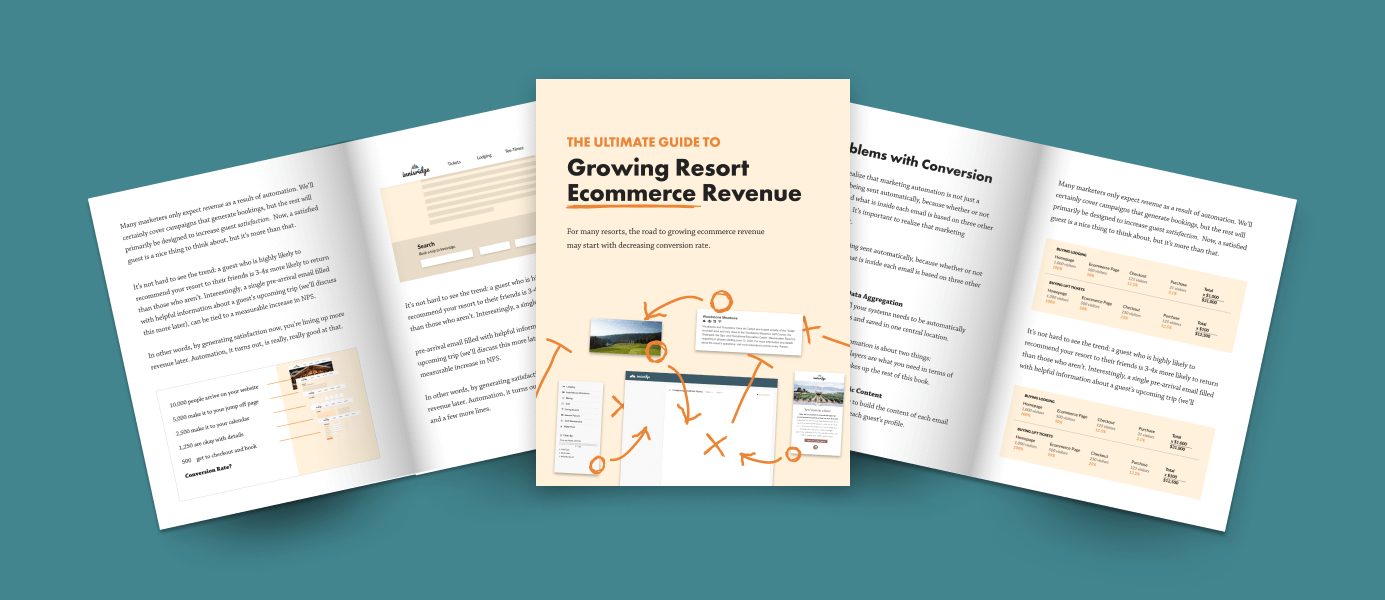
Tips

This is an excerpt from our upcoming book, The Ultimate Guide to Growing Resort Ecommerce Revenue. Click here to download a preview→
Desperate to save money for twilight summer rounds at the local golf course and a season pass at my local ski hill, I worked as many hours as I could as a grocery store cashier during high school. One of the most important things I went through during training was how to take checks as payment. But over the course of those three years, some combination of the trends of the day and the demographics of my hometown shifted, and checks quickly went from a major thing to almost nothing. By the time I balanced my last till, I could go entire shifts without seeing more than 1 or 2 checks. Technology had finally caught up to consumers’ hopes for a simpler, faster, easier way to pay.
Something similar has happened in recent years. Instead of checks, it’s traditional credit card payments that are the victim. It’s not that credit cards are going away, it’s simply that there are now options for people who would prefer to pay for things over time or with something other than a 16-digit number.
Just like with giving folks the option to book asynchronously instead of all at once or over the phone instead of online, if you give people the option and that’s their preference, chances are they’ll take it and thank you for it by booking instead of not. Here are two examples.
Quick, Mobile Payments
At a travel conference 10 years ago, a speaker asked attendees to raise their hands if they had ever purchased something from their phone. Only a small handful raised their hands. Fast forward to 2021 and that minority has become the majority; mobile ecommerce has officially passed non-mobile ecommerce for the first time. Part of the reason this is possible is because, like credit cards, technology has caught up with demands. Paying for something online is hard when you’re typing a 16-digit number, full physical address, etc. into a tiny keyboard that’s prone to autocorrect things that don’t look like words. So services like PayPal – that let users pay with a username and password – have seen incredible adoption. I’ve seen activity-only resorts with primarily lower-priced items see as much as 10% of transactions paid for via PayPal.
Pay Over Time
On the flip side, larger purchases have always been a pain point for other reasons. In this case, trying to pay for a big, expensive vacation can be virtually impossible if that vacation costs more than your monthly paycheck. Once again, technology has caught up with customers’ demands. Services like Affirm allow guests to pay for things over time in simple installments with full transparency in terms of interest and schedules. Guests are more likely to book and resorts see more revenue.
The point of this chapter isn’t to provide an exhaustive list of potential payment solutions. Instead, the goal is to identify the trend – guests are looking for new and better ways to pay for the things they want – and recognize that, once again, a one-size-fits-all approach will force people down paths that don’t align to their behaviors.
If you can give your guests a better option, you should.
This is an excerpt from our upcoming book, The Ultimate Guide to Growing Resort Ecommerce Revenue. Click here to download a preview→